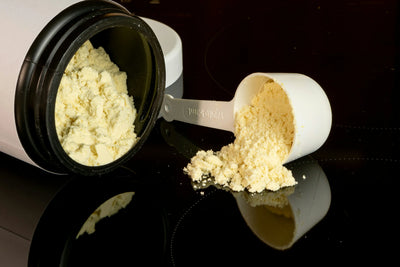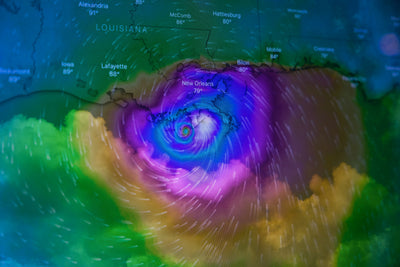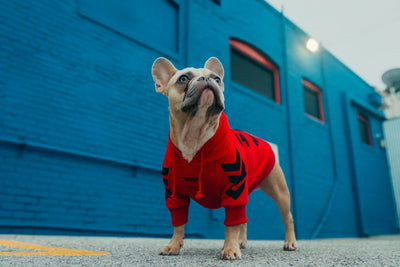Introduction
Skin and its associated tissues are found in various layers: epidermis, dermis, subcutis, fat and muscle. When a pet is injured, these areas may be cut, punctured, scraped, ulcerated or even burned. These wounds may be sterile, unclean (relatively clean, but not sterile), or even heavily contaminated.
There are four stages of wound healing: inflammation, debridement, repair and maturation.
Inflammation (starts immediately)
This is the first stage of healing and is all about controlling bleeding and activating the immune system. Without going into too much biochemical detail, blood clots are forming and blood vessels are constricting to limit blood loss from the wound area. This process also requires “cleaning” the cells of the immune system to address contaminating bacteria and any dead tissue.
Wound debridement (begins in a few hours)
Wound fluid, dead tissue and immune cells form pus, which drains from the wound. Cells that were called to the wound during the inflammatory phase are now actively consuming necrotic tissue and purifying the wound.
Repair (begins in a few days)
Collagen begins to fill the wound to bind the torn tissue, a process that takes several weeks to complete. New blood vessels begin to grow into the area from nearby uninjured blood vessels. The edges of the wound begin to produce “granulation tissue,” the moist pink tissue that will eventually fill the wound. The wound actually shrinks in a process called “wound contraction” so that new skin can form and cover it.
Maturation (starts at 2-3 weeks and can take months or even years)
The final stage of scarring occurs once large amounts of collagen have been deposited. The scar will grow stronger over time as new blood vessels and nerves grow and the tissue reorganizes. The end result will never be as strong as uninjured tissue, but should eventually reach about 80% of its original strength.
| Stage | Timeframe | Description |
|---|---|---|
| Inflammation | Immediate | Controls bleeding, forms blood clots, and activates immune system to clean the wound. |
| Wound Debridement | A few hours | Pus forms and drains; immune cells remove dead tissue. |
| Repair | A few days | Collagen fills the wound, new blood vessels grow, and pink granulation tissue forms. |
| Maturation | 2-3 weeks to months/years | Scar strengthens as collagen deposits and tissue reorganizes; reaches about 80% of original strength. |
When the wound is a surgical incision with sutures, there is no area of the body that can be filled with granulation tissue. Instead, the wound edges have been held together and the two margins simply need to be glued together. New skin begins to form across the margins within 2 days. The four stages of healing continue as described above, but go faster (10-14 days total) because there are no blank areas to fill with tissue. Healing occurs at the edge of the wound, not down its length. Longer incisions heal as quickly as shorter ones.

Grafts may be necessary if the wound is open and cannot be closed with sutures (it is too large, too much tension on the wound edges pulling the wound apart, the wound is too infected, etc.). Granulation tissue must form to fill the void, which is part of the wound healing there. Once the wound is filled with granulation tissue, contraction will soon follow, which means the wound will become smaller and smaller. Eventually, it can be allowed to simply close in on itself, or, when it is small enough, the edges can be trimmed and the wound surgically closed with the primary intent of a smaller scar and better fur coverage. In appropriate cases, skin grafts can be applied, but only if a healthy granulation bed exists.
When a wound is debrided of debris, scars, or crust (usually when a bandage is removed), granulation tissue is evident. Many people, especially those unfamiliar with wound management, find granulation disconcerting: it is red or bright pink, moist, bleeds easily, and is often confused with the underlying muscle. It can look painful. Many people incorrectly assume that granulation tissue shouldn't be there when, in fact, it's a sign of a healthy healing wound.
Pelletized tissue:
- It should be moist to allow for better blood flow and a proper shedding phase.
- Bleeds easily because it is rich in blood vessels.
Usually not painful because the nerves grow into the granulation tissue very late in the healing process.
The body actually has decent healing ability, but some things can go wrong and ways we can facilitate the healing process.
Deeper pockets of pus must be drained. Eventually, these may rupture on their own, and they usually take a lot of excess tissue with them. Pus can best be drained by tilting and flushing. In some cases drains need to be surgically placed to help remove harmful fluids.
The injury should remain hydrated, which can be achieved using bandages or topical creams. A hydrated wound promotes improved circulation and accelerates the healing process more effectively.
Contamination should be cleaned up. Dirt, hair, pus and other bacteria-rich material should be flushed from the wound. Topical antibiotics may be needed to address the infection.
Dead tissue should be trimmed. If there is non-viable tissue in the wound, it should be removed so that the body does not have to liquefy it. This can be done surgically, through special types of bandages or topically applied, depending on the type of wound.
Wound enhancement materials may be applied to minimize infection and/or enhance granulation tissue formation. Your veterinarian may choose one that potentially assists the body's wound healing efforts.
FIRST AID TIP: If your pet's wound is fresh, your pet will be able to attempt to wash off large debris granules with tap water (saline rinsing of the eye is even better as it is balanced by the exposure of tissue). If possible, cover the wound with clean, dry bandage material. See your veterinarian for specialized wound care.
If the wound seems to be persisting, either progressing in healing and then getting worse, or not showing signs of healing at all, then be sure to bring your pet to the veterinarian. An unhealing wound may have a tumor involved or may simply be infected. Don't try to “do it yourself” and end up with a problem that is tricky and may not be manageable.
How to Clean Dog Wound?
Dogs appear to have wounds on the body, the dog owner should be timely to the dog to deal with the wounds only, do not let the dog's wounds like this, so as not to dog's wounds become serious, generally to the dog's wounds healing fast medication is recommended not to use, especially human drugs, so as not to wound stimulation leading to inflammation and pus, to this when the dog owner should be the first to deal with the wounds of the dog, the following to look at.
1. Wash the dog's wound
Dogs with wounds can not be left unattended, so that the dog's wounds become serious, the dog owner found the dog wounds, you can first shave the dog's wounds around the hair, and then use saline for cleaning, and the use of hydrogen peroxide for cleaning, in addition to the dog during the injury wounds may be itchy, in order to prevent the dog from licking the affected area, the dog owner can give the dog to wear an Elizabethan ring in the treatment of Wound.
2. Treatment of wounds
After cleaning the wound for the dog, we have to give the dog to deal with the wound, first of all in the dog's wound sprinkled with some of the favor of the fast closing, and the use of cotton swabs pressed, so that the powder penetrates into the wound, in the dog bandage the wound, affixed with a medical tape to fix, and pay attention to the period of the dog every day at regular intervals to replace the new gauze and powder.

3. Observe the wound
After the dog's wound, the dog owner can observe the dog's wound every day when replacing the new powder and gauze for the dog, if the dog's wound has appeared to be slowly scabbing phenomenon, indicating that there has been a slow improvement, if not only did not appear to be scabbing phenomenon, accompanied by the appearance of blood seepage, flow of unknown liquids, then the dog owner also needs to take the dog to the veterinary hospital in time to carry out inspections and under the guidance of veterinarians to help the dog to treat the wound, the dog owner should also take the dog to the pet hospital for examination. Veterinarian's guidance to help the dog treatment.
As pet owners, we are constantly concerned about their health and safety. Unfortunately, wounds on pets are inevitable. This is when we need to treat their wounds properly to avoid infection and other complications. In this article, we will share our knowledge about dog wound scabs and the use of debridement as the primary treatment.
Before treating a wound, we need to prepare ourselves and our pets. First of all, wash your hands, then wipe the cleaning tools and the hair around the wound with disinfectant or alcohol. Secure your pet to avoid moving around during treatment.
When treating a wound, we need to understand the type and extent of the wound. If the wound is deep or large, it needs to be treated by a veterinarian. However, if it is just a small wound or surface abrasion, we can treat it by ourselves.
Cleaning the wound is a must and can be done with saline or a professional wound cleansing solution. When wiping with cotton balls or gauze, you need to be gentle and meticulous. If there is a lot of bleeding, use a clean gauze to stop the bleeding first by applying pressure.
It is very important to stop the bleeding of the wound and if it does not stop for a long time, you need to go to the veterinarian. We can use gauze or hemostatic powder to stop the bleeding.
After the wound has stopped bleeding, you can apply some anti-inflammatory and antiseptic ointment. The type of ointment is chosen according to the type of wound and it is best to consult your veterinarian for advice.
After treating the wound, we need to let the pet rest. If the wound is deep or still painful, you need to be careful to avoid your pet licking the wound.
As the wound begins to recover, it may scab over. This is normal and we need to be careful not to let it be torn off or re-injured.
If your dog's wound is scabbed over, we can treat it by removing the scab. Removing the scab is an important step to help the wound recover faster.
First we can soak the wound in warm water, this will soften the scab and make it easier to come off. The soaking time should not be too long, usually no more than 10 minutes.
After soaking, we can apply some scab remover to help speed up the process of scab removal. You need to be careful not to touch healthy skin when applying it to avoid irritation.
After applying the scab removal solution, we can gently massage the skin around the wound. This helps to promote blood circulation and the shedding of the scabs.
Once the scabs start to loosen, we can wipe around the wound with a wet gauze or cotton ball. This will help remove the scab faster without causing irritation to healthy skin.
After removing the scab, we need to treat the wound again by cleaning and applying ointment. This can help prevent the wound from getting infected again.
After treating the wound, we need to observe whether there is any change in the wound of our pet. If there is any abnormality, we need to go to the veterinarian in time.
When treating dog wound, we need to prepare tools, understand the type and extent of the wound, clean the wound, stop the bleeding, apply ointment, let the pet rest, remove scabs, and so on. Proper wound treatment can help your pet recover faster.
What to Put on A Dog Wound?
Pets are indispensable companions in our life, but they will inevitably suffer from some trauma in daily life, such as abrasions, bites and so on. At this time, we need to timely treat their wounds, and a common situation is that the dog wounds will form scabs. How can we safely and effectively treat dog wound scabs with scab removing drugs?
Scab removal drugs are a class of drugs that can soften and remove the skin surface scabs, the main ingredients are enzymes, plant extracts, calcium carbonate and so on.
The common drugs on the market to remove scabs are: baking soda, alkaline water, hydrogen oxide, enzyme drugs and so on.
1. How to use baking soda
Baking soda can soften scabs and promote healing. To use, add the right amount of baking soda to warm water, moisten a cotton ball and gently wipe the dog wound. However, it should be noted that overuse may cause irritation to your pet's skin.
2. Use of alkaline water
Alkaline water can soften the crust on the surface of the skin, but you need to pay attention to the choice of concentration. Usually, the right amount of alkaline water is added to warm water, moistened with a cotton ball and gently wiped on the dog wound.
3. How to use hydrogen oxide
Hydrogen oxide can kill the bacteria around the wound and accelerate the healing process. When used, hydrogen oxide can be applied directly to the wound, or add the appropriate amount of hydrogen oxide to warm water and then wipe the wound with a cotton ball moistened.
4. How to use enzyme-based drugs
Enzyme drugs can break down the necrotic tissue on the wound and promote wound healing. When used, you can apply the drug directly on the wound, or add the drug to warm water and wipe the wound with a cotton ball wet.
What should I pay attention to when using scab removal medication?
- When using scab removal drugs, you need to pay attention to the following points:
- Do not apply the medication to healthy skin;
- Do not apply the medication to broken wounds;
- Strong friction should be avoided during use to avoid damage to your pet's skin;
- Use the medication in accordance with the dosage on the instructions.
Choosing the right scab removal drugs need to consider the following aspects:
- The condition of the wound;
- The composition of the drug;
- The dose and method of using the drug.
After dealing with the dog wound scab, you need to pay attention to protect the wound to avoid re-traumatization. You can use wrap-around bandage for wrapping and change the bandage regularly.
In addition to timely treatment of pet injuries, it is also very important to prevent pet injuries. You can provide a safe living environment for your pet, such as adding railings, doors and windows; avoid contact between your pet and other animals, such as not bringing your pet to crowded places.
If the use of scab removal medication is excessive, it may cause skin irritation to your pet. In this case, you need to stop using the medication immediately and rinse the skin with warm water. If the situation is serious, it is recommended to consult a veterinarian immediately.

When using medication, care needs to be taken to avoid medication contamination. You can use a cotton ball or a towel to dab the appropriate amount of medication and avoid touching the medication directly with your fingers.
It is not recommended to use more than one kind of scab removing medicines at the same time, because the ingredients of different medicines may affect each other, resulting in reduced therapeutic effect or even adverse reactions.
If your dog wound is serious or you are unsure of the treatment of the wound, it is recommended to consult a veterinarian promptly. Choosing the right veterinarian requires consideration of the following aspects: credentials, service attitude, cost, etc.
When dealing with dog wound scabs, we need to choose the appropriate scab removal drugs and use them according to the dosage and method. At the same time, we also need to pay attention to protecting the wound, preventing the pet from being injured and avoiding contamination of the medicine. If not handled properly, it may cause irritation to the pet's skin and even lead to adverse reactions. When treating pet wounds, you need to operate carefully and follow the correct treatment method.
Precautions and Daily Care
When dealing with dog trauma, there are some precautions to be concerned about in addition to choosing the right medication and treatment plan. When handling wounds, make sure to keep your hands clean to avoid secondary infections. After treating the wound, you can use some anti-licking collars to avoid the dog licking the wound and affecting the healing.
In daily care, the dog's diet is also very important. Provide high quality dog food to ensure that your dog is getting enough nutrients to help the wound heal. Keep your dog's living environment clean and avoid exposing your dog to dirty areas to reduce the risk of infection.
If the wound develops abnormalities such as redness, swelling, or pus after treatment, you should take your dog to the veterinarian immediately for a checkup. Timely and professional treatment can effectively prevent wound infection and ensure your dog's health.





